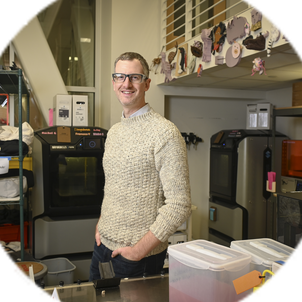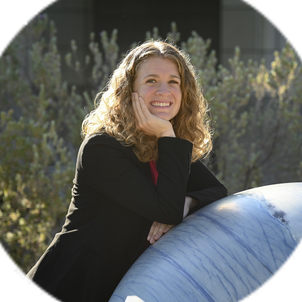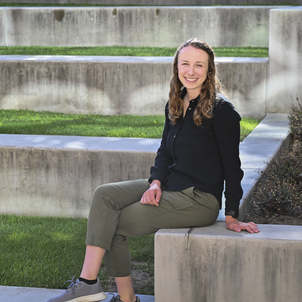I’m so glad I had that time, because it cultivated my love of science and discovery. I was also fascinated with mixing different things and seeing the results, so the kitchen became a laboratory for me. My mom is an excellent baker, so we’d bake together. Baking is just a chemical reaction that you can enjoy at the end, and I think that helped fuel my development into a materials chemist.
During my senior year in high school, I had a chance to do a research project with a staff scientist at Oak Ridge National Laboratory looking at materials you could embed into plastics to cause them to break down in sunlight faster than they might otherwise, which could have a big impact on plastic waste in the ocean, for example. This led to my interest in chemical engineering as an undergraduate. I later moved to materials science for my master’s and PhD. The two fields talk to each other; materials scientists figure out how to make something on a nanoscale, then chemical engineers figure out how to translate that idea to a macro scale and make it useful to society.
Today I work with my advisor, Professor Reinhold Dauskardt, making nanoscale thin films of metal oxides at scale and very quickly. We’ve made transparent conductors, which are in everyone’s cell phone and are often made using techniques that require a vacuum, which slows down the manufacturing process. We make our conductors differently, using liquid precursors that we can spray down, much like painting a surface. This method requires no vacuum, meaning the metal oxide layers can be formed very quickly, with a lot of control, and potentially at lower temperatures.
One of the technologies we hope to impact is the production of perovskite solar cells, which are built in layers, like a cake, one of which is a transparent conductor. Using our process to build the conductor could significantly speed up manufacturing, resulting in increased production and lower cost. We’ve so far used this process in solar cells and capacitors, but there’s a growing interest in using these manufacturing techniques for various applications in electronics, catalysis, and optical materials.
Not a lot of students get all their degrees at one university, but there are a lot of reasons I’ve stayed at Stanford for my bachelor’s, master’s, and PhD. I love the university’s emphasis on entrepreneurship, and there’s so much intellectual capital here. We also have an emphasis on nanoscience and looking at materials on a small scale, which has ended up informing a lot of my PhD work. My advisorial fit, first with Professor Zhenan Bao as an undergraduate and now with Professor Dauskardt for my graduate work, has been like a glove.
One of the things I love about being at Stanford is being able to take part in the arts. I’m a classically trained saxophonist and play as part of a saxophone quartet with lecturer David Henderson at the Department of Music, where I also take lessons. I’ve been part of the Stanford Wind Symphony with Giancarlo Aquilanti, a lecturer in music, for the past eight years. I’ve also founded a small choir of Stanford students and young adults in the area who sing Gregorian Chant and sacred polyphony (choral music) together. It began when I went to some introductory chant workshops hosted by Professor Bill Mahrt from the Department of Music at St. Thomas Aquinas Parish in Palo Alto. I just fell in love with it.
My future focus might be in academia or in industry; I’m not sure yet. For me, it’s just inspiring to try and understand how the universe is put together; to move from peering at atoms arranged in a crystal lattice to taking that knowledge to make something at scale. There’s just so much to admire with wonderment in the world around us.
Related spotlights

Dan Somen

Sonia Martin


